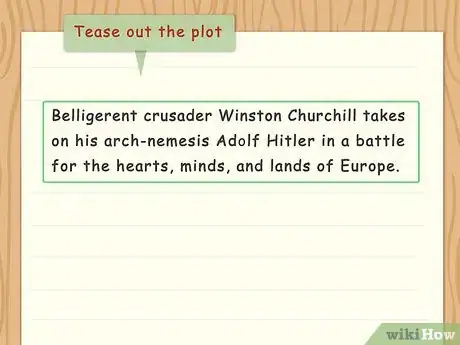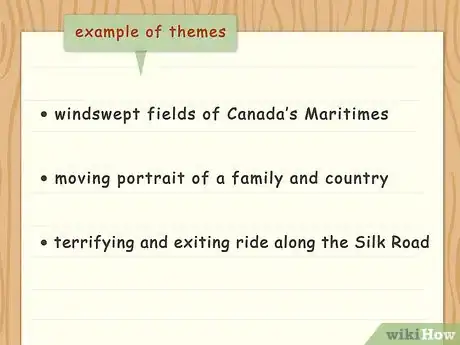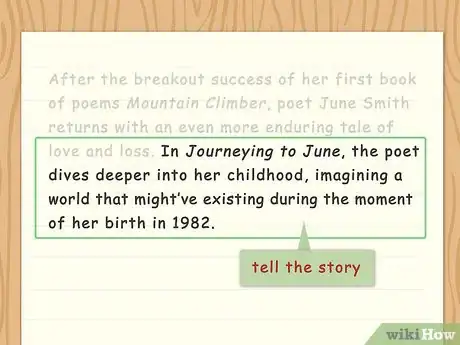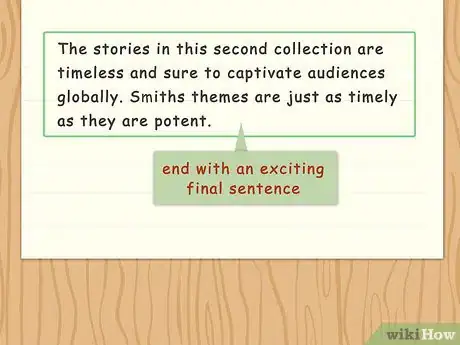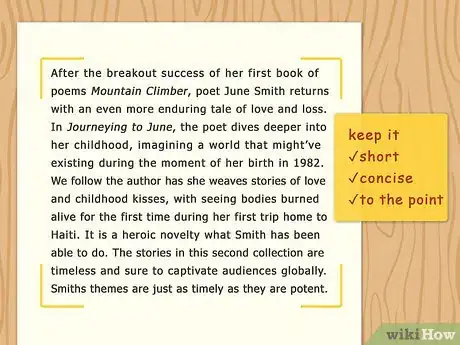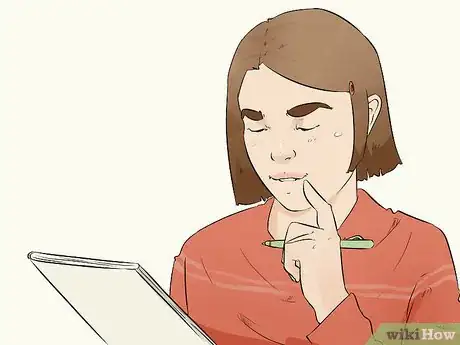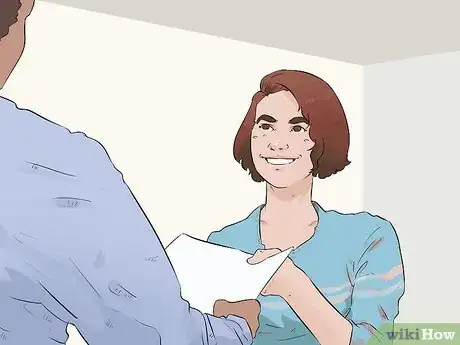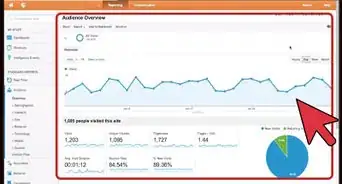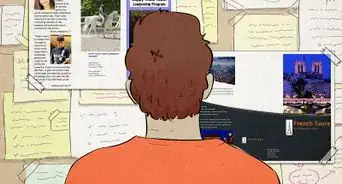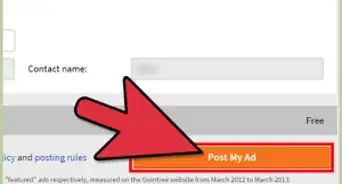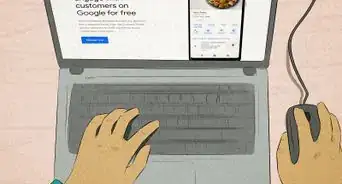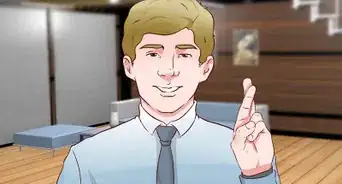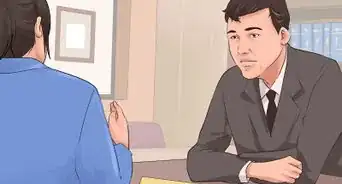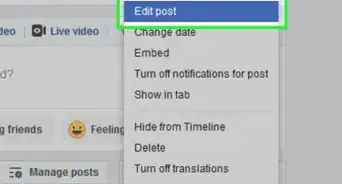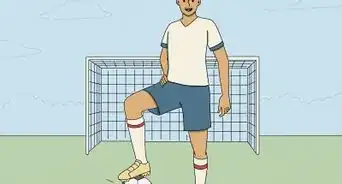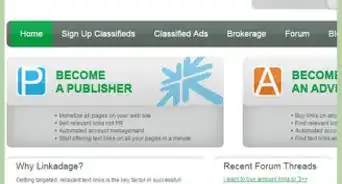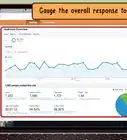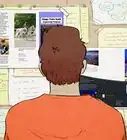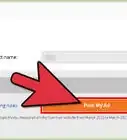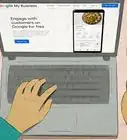This article was co-authored by Pete Canalichio. Pete Canalichio is a Brand Strategist, Licensing Expert, and Founder of BrandAlive. With nearly 30 years of experience at companies such as Coca-Cola and Newell Brands, he specializes in helping brands find the most authentic parts of their story to build a brand strategy. Pete holds an MBA from the University of North Carolina at Chapel Hill and a BS in Physics from the United States Naval Academy. In 2006, he won an MVP Award from Newell Brands for his contributions to their Global Licensing department. He’s also penned the award-winning book, Expand, Grow, Thrive.
This article has been viewed 260,193 times.
Blurbs are short descriptions that promote things such as movies, books, or other projects. The person who came up with the word “blurb” called it a “flamboyant advertisement.”[1] Your blurb should do just that: catch your readers and get them to buy, see, or support whatever you’re promoting in 150 words or less. You can write a blurb by gathering important information and putting it together in a short and catchy text.
Steps
Gathering Important Information
-
1Look at blurb samples. Think about your favorite blurbs and what about them draws you in. Read the sites of book stores, reviews of books, or film ads to find ones you like. Getting a feel for different types of blurbs can give you inspiration to write yours.
-
2Figure out your target audience. Ask yourself who you want your blurb to reach. Is it for a movie or book critics, children, academics, or the general? Knowing who you want to hook with your blurb can help you tailor the language of it.[2] For example:
- Use informal and engaging words to target the general public
- Use formal and theme-specific language for professionals such as academics or book and film critics
- Choose simple and fun words if you're targeting children and young adults
Advertisement -
3Identify your main characters. List the characters that drive your story or play a major role in it. Then animate them with one word that puts them in the most interesting light as possible. For example:
- belligerent crusader Winston Churchill
- sassy beauty Scarlett O’Hara
- intrepid professor Robert Langdon
-
4Tease out the plot or argument. Your readers need to know what your story or text is about. Compose one or two sentences that help your reader understand your book, film, or project. Choose catchy words that get right to the point so that you don’t turn off potential readers or viewers.[3] For example:
- Belligerent crusader Winston Churchill takes on his arch-nemesis Adolf Hitler in a battle for the hearts, minds, and lands of Europe.
- Sassy beauty Scarlett O’Hara navigates the troubled waters of the post-Civil war south in a tale of courage, heartbreak, and love.
-
5Note your primary themes. Identify one or two topics or themes that summarize your work. Then combine them with an emotive word or two that can give your readers an idea of the story and make them want to know more.[4] For example,
- windswept fields of Canada’s Maritimes
- moving portrait of a family and country
- terrifying and exiting ride along the Silk Road
Turning the Information into Your Blurb
-
1Pick up your readers with a hook. Think of the first line of your blurb as a pick up line for a date. Compose a sentence that is clever and engaging and isn’t a cliché. Having a concise and catchy “hook” can pull you in to continue reading the blurb and either read or see your work. For example:
- Avowed party princess and socialite Anna Helene Lutz just wasn’t having any of this girls’ week of bohemian glamping and Bacchanalian fests on Sardinia.
- The seemingly neutral International Tracing Organization stood at the crossroads of the humanitarian reconstruction of war-torn Europe in 1945, but equality is often merely a guise for the nefarious.
- Squirrelled away from ever-encroaching technology of 2020 London, the Samothrace family avoids all conveniences of modern life, instead scraping by like their ancestors did in the filthy and criminal city of dreadful delight.
-
2Tell your readers about the story. Focus on the important aspects of your characters and plot or argument after your hook line. Write only 1-2 short sentences that cover the most important parts to give your reader an idea of your story. Keeping your description short holds your readers’ attention and adds a bit of mystery so that they’ll want to read or see more. [5]
-
3End with a bang or a cliffhanger. Ensure that your potential readers and viewers stay interested with an exciting final sentence. Add extra mystery and hints about the outcome by using a cliffhanger or question that will have your readers ask, “so what happens?” For example:
- Despite their different political views, Churchill and Stalin united in ways unimaginable to wrest Europe from the clench of Nazi tyranny.
- But should Anna Helene give up her comfortable life to enjoy the bohemian comforts of farming the endless fields of Sardinia with the enchanting Emilio?
-
4Avoid misleading your readers. Be honest to your intended audience as you write. Think about things such as, “am I trying to sell a romance novel as a history?,” or “am I trying to turn a philosophical study a novel?” Not misleading your readers can ensure that your readers don’t stop reading or seeing what you’ve advertised.
Editing Your Blurb
-
1Keep the sentences short and concise. Be like Ernest Hemingway when writing and checking your sentences. Make sure they are short and to the point while still drawing in your reader. This engages your reader and can maintain their attention.
- Recognize that most readers only skim blurbs. Keeping the blurb short makes it easier to skim.
-
2Tailor language to your audience. Cater to your potential readers and views with language specifically for them. Choose words that they can understand and that evoke particular atmospheres or emotions that draw them to your work. Targeting your language to specific readers can ensure that they want more of your final project.
-
3Copy-edit your blurb. Put your blurb aside once you’ve finished. A few hours or days later, read it aloud to figure out spots that rephrased, corrected, or streamlined. Copy-editing your blurb can ensure that you have a perfect text that attracts your potential consumers.
- Reading your text out loud makes it easy to see and hear errors.[6]
-
4Ask for outside opinions. Ask colleagues, friends, or even potential readers to look at your text. Having other people review your blurb can help you make final edits that ensure that it is is engaging and understandable.[7]
Community Q&A
-
QuestionWhat is the word for a standard blurb?
 Community AnswerI think it's just "blurb". Or endorsement, or summary.
Community AnswerI think it's just "blurb". Or endorsement, or summary. -
QuestionHow do I write a blurb for poems?
 Community AnswerNote what the poems are about and perhaps what style they are written in. Don't give too much information away. You can also have a look at other poetry book blurbs in the library or in a local book shop for ideas.
Community AnswerNote what the poems are about and perhaps what style they are written in. Don't give too much information away. You can also have a look at other poetry book blurbs in the library or in a local book shop for ideas. -
QuestionHow do I create a blurb that will amuse my audience?
 Community AnswerMake you blurb understandable for your target audience. Keep it short, yet still precise.
Community AnswerMake you blurb understandable for your target audience. Keep it short, yet still precise.
Expert Interview
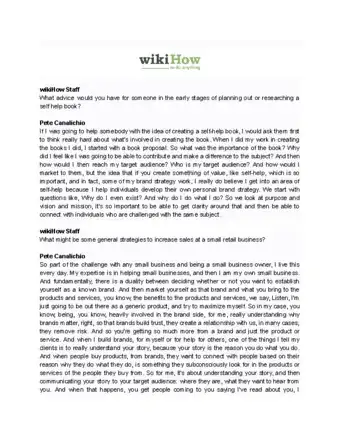
Thanks for reading our article! If you'd like to learn more about writing a blurb, check out our in-depth interview with Pete Canalichio.
Sample Blurb
References
- ↑ https://howtowriteablurb.wordpress.com/
- ↑ https://howtowriteablurb.wordpress.com/
- ↑ https://howtowriteablurb.wordpress.com
- ↑ https://howtowriteablurb.wordpress.com
- ↑ https://howtowriteablurb.wordpress.com
- ↑ http://writingcenter.unc.edu/handouts/reading-aloud/
- ↑ https://owl.english.purdue.edu/owl/owlprint/642/
About This Article
When you need to write a blurb for a movie, book, or other project, start by writing a clever and catchy hook that introduces some of the characters and setting of the topic. Then, write 1-2 additional sentences that explain the plot of the story in a general way. Focus on the most important aspects, but don't give away any twists or surprises in the plot. End the blurb with a cliffhanger sentence about the plot that leaves the reader asking "what happens?" Scroll down for tips on identifying the most important information for your blurb!



